Academic pride comes in a variety of forms; a graduation photo, a framed diploma, or a special class ring. These little jewels are the gleaming, shiny sign that you made it through a school- so what to do when they’re no longer gleaming and shiny? Here’s the rundown on how to get class rings fixed.
Why Class Rings are Difficult to Fix

Class rings can be some of the trickiest pieces of jewelry to repair. Almost all class rings have incredibly intricate designs that may include engravings, enameling, and stones. This complexity also extends to rings that were created to indicate membership in certain organizations, such as professional rings, military rings, and other kinds of scholastic class rings.
The physical makeup of the ring can also limit your options when it comes to finding someone to repair the item. Many class rings are made out of tough materials such as stainless steel, tungsten, and commercially-limited alloys that may be specific to a particular manufacturer, such as Jostens. Siladium, for instance, is a particular stainless steel alloy that is used to make high school and college rings. Most jewelers cannot size it, but companies with manufacturing capabilities such as Quick Jewelry Repairs have the equipment to manipulate this type of metal.
Aside from their designs, even the option of sending the ring back to the original manufacturer can be troubling- many people opt to search for someone cheaper. The ring resizing cost for sending it back to Balfour, for example, is comparatively higher than a local jeweler’s price because they need to intake the ring and pass it along to the appropriate facility or department for the work.
The Process of Class Ring Repair
1. Evaluate
The first (and most important) thing a jeweler will do when receiving an item is to give it a thorough examination. Class rings require a lot of evaluation, since the complicated designs can also complicate the repair process. Below is a list of factors to take into account:
- Enameling: Enameling is the process that puts a hard, colored glaze on your ring. It’s a powdered glass mixture that’s “baked” onto the surface of the metal, and over time it can crack and fall off. When exposed to pressure or high heat, it can also melt off, making it difficult for the jeweler to retain the original design of the ring. Many class rings incorporate enamel into their designs to display school colors; Herff Jones rings will almost always contain enamel because they use it to highlight the carvings on the shoulders of the rings.
- Stones: The gems in your item can affect a number of things. Depending on how they’re set, that can severely limit the number of sizes a ring can go up or down in the sizing process. Missing or cracked stones have to be replaced, and in some situations the replacement stone may need custom cutting, as class rings can be quite creative with gem design.
- Metals: Most jewelers do not have the ability to work with stainless steel, which is a popular material for class rings. This is due to the notorious toughness of the metal; it requires special equipment and expertise in order to manipulate it.
Once the jeweler has taken all necessary notes on the ring’s design and materials, they will look at the work needed.
2. Resize, Repair and/or Restore
The repair work varies from ring to ring, but the most common repairs have to do with resizing or fixing the ring’s shank.
Class Ring Resizing
- Many class rings have a flat top, with corner-like “shoulders.” While this design is a classic and easily identifiable as an academic piece of jewelry, it also limits the sizing. If the ring is going up or down too many sizes, this table-like design may possibly become distorted or even collapse.
- Even the resizing process can cause issues. A ring is resized by cutting into the band, and either adding or removing material to size accordingly. The heat that needs to be applied to the metal during this process will melt off any enamel, and potentially burn any faux stones that are made out of plastic or glass.
- To prevent these situations from happening, the jeweler makes use of various techniques and equipment to minimize the heat used during the process, or reduce the area of exposure. He may opt to use a laser soldering machine, or unset any stones to reset them after the sizing process.

Mens championship class ring sized up from a 10 to a 13

Ladies class ring before and after sizing.
Class Ring Shank Repair
- Over time, the shank, or the back of the class ring, can thin out or break from wear and tear. This renders the ring completely unwearable.
- The repair work needed will depend on the extent of the damage. If there is a small crack or cut in the shank, the jeweler can simply solder it shut. If the shank is too thin or broken into pieces, it will require a shank replacement.
- A shank replacement is the process of replacing the shank with a new and thicker strip of matching material in order to create a solid, wearable band. The jeweler fuses the metal at the ends of the ring to make it uniform and even. While this gives the ring a brand new look and allows you to wear it again, it will remove any interior marks, like metal stamps or engravings.

This MIT class ring had a shattered shank.
3. Finishing
Once the heavy-duty work is finished, the ring is moved to finishing, such as polishing, cleaning, plating, and enameling.
Polishing
The repair process leaves behind rough and uneven patches of metal, as well as scratches from the jeweler’s tools. The polishing process can buff out all of these imperfections, and even create different looks, such as a matte finish.
Cleaning
After polishing, the jewelry must be cleaned, as the polishing and repair work leaves soot and other residue all over the ring. The ring is cleaned in an ultrasonic cleaner, which is a tank of water that blasts bubbles at the item to remove grime from the tiniest cracks.
Plating
Some class rings have details that are gold-plated, and the plating can wear off over time or during repair work. In order to fix the discoloration, the jeweler makes sure that the surface is properly prepared by the polisher before moving it to the plating process. Depending on the work needed, the entire piece is either submerged into a gold-plating tank, or touched up with a plating pen.
Enameling
The final touch; if enamel was part of the design, it may have been affected during the repair. The jeweler takes note of the original design by referring to a picture taken before work, and re-enamels the ring. The ring is then “baked” or “cured” in order to harden the enamel and fuse it to the surface of the class ring.
You’re all set to begin fixing up your own class ring!
Services Mentioned In This Article
-
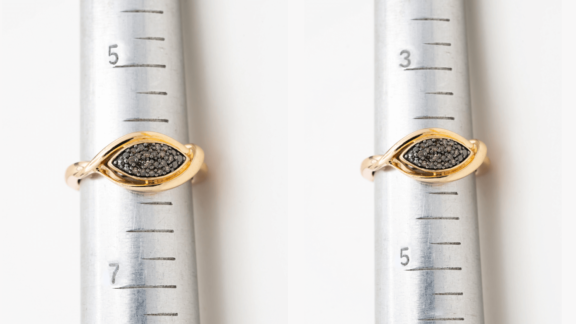
Ring Sizing Down Service
$40.00
Select options -
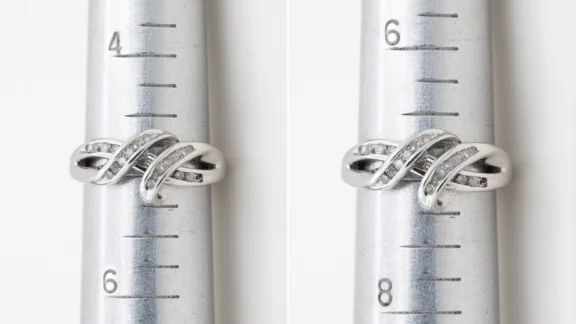
Ring Sizing Up Service
$40.00
Select options -

Ring Engraving
$35.00
Select options -
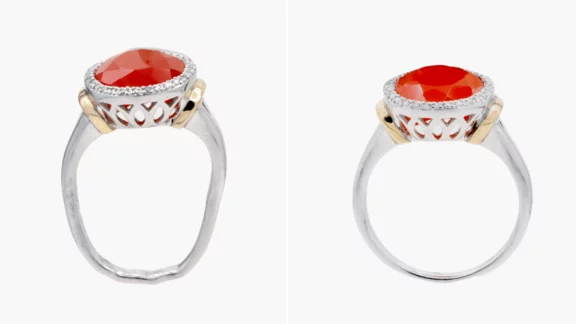
Ring Reshaping
$33.00
Select options -
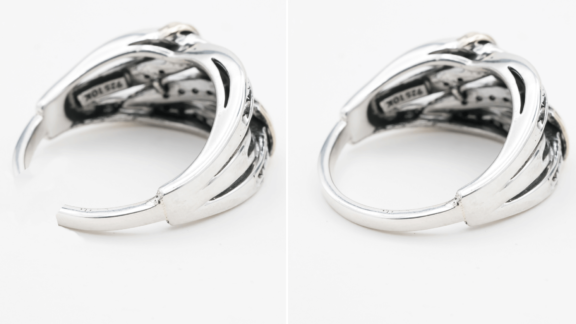
Ring Shank Repair
$45.00
Select options -
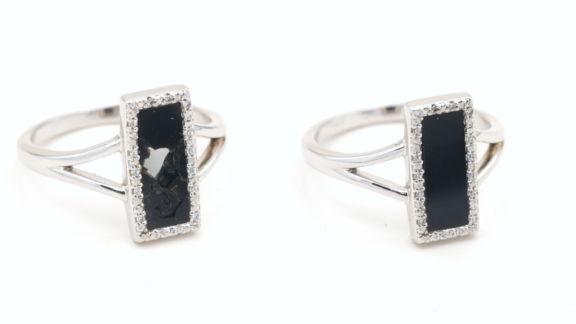
Jewelry Enamel Repair
$33.50
Select options
Ten articles before and after
What is Rhodium Plating? | CHURINGA Jewelry Repairs
Engagement Ring Cleaning: The Process | CHURINGA Jewelry Repairs
5 Ways to Enhance Your Existing Jewelry | CHURINGA Jewelry Repairs
What Is a Gemstone Appraisal? (And Why Should You Get One) | CHURINGA Jewelry Repairs
Tungsten Rings: Pros and Cons | CHURINGA Jewelry Repairs
5 Popular Jewelry Clasp Types and How to Repair Them | CHURINGA Jewelry Repairs
How to Fix a Broken Necklace Pendant | CHURINGA Jewelry Repairs
4 Ways to Identify Antique and Vintage Jewelry | CHURINGA Jewelry Repairs
What Stone Cut Best Fits Your Personality? | CHURINGA Jewelry Repairs